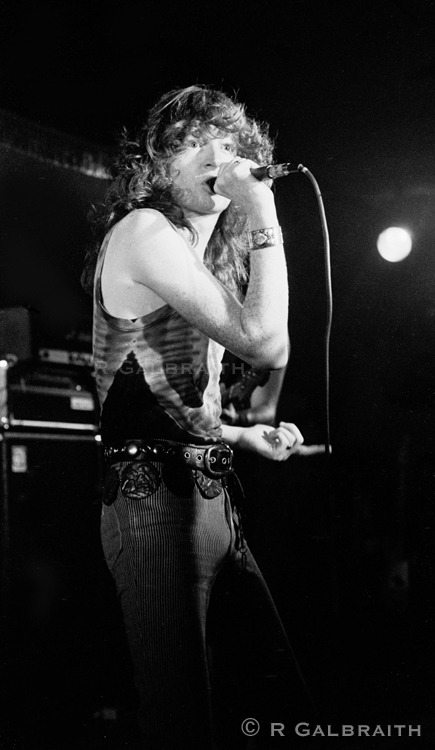#Dave King
Text

Fastway
#fastway#1980s#classic rock#fast eddie clarke#dave king#shane carroll#paul reid#alan connor#group shot#hard rock
15 notes
·
View notes
Text

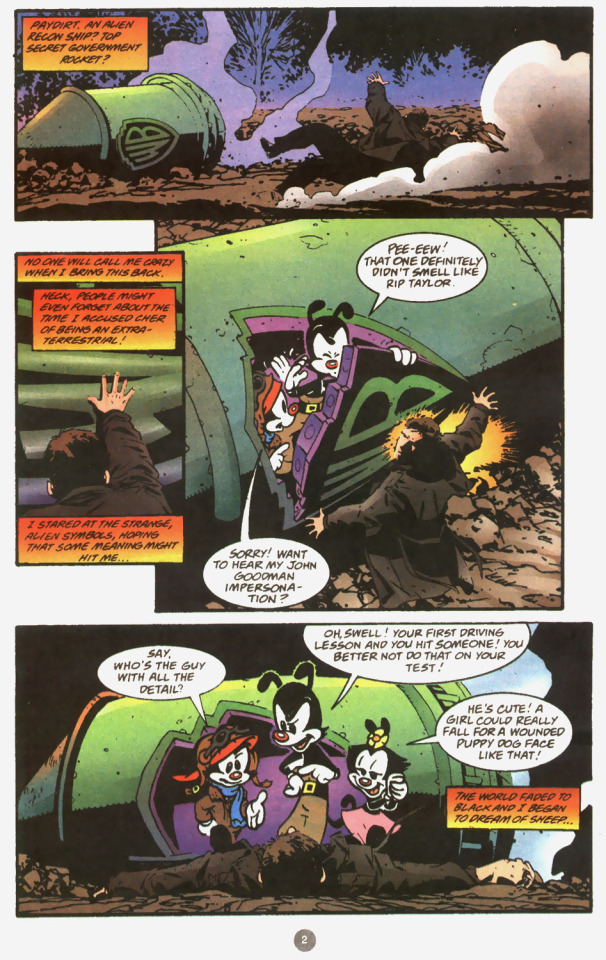
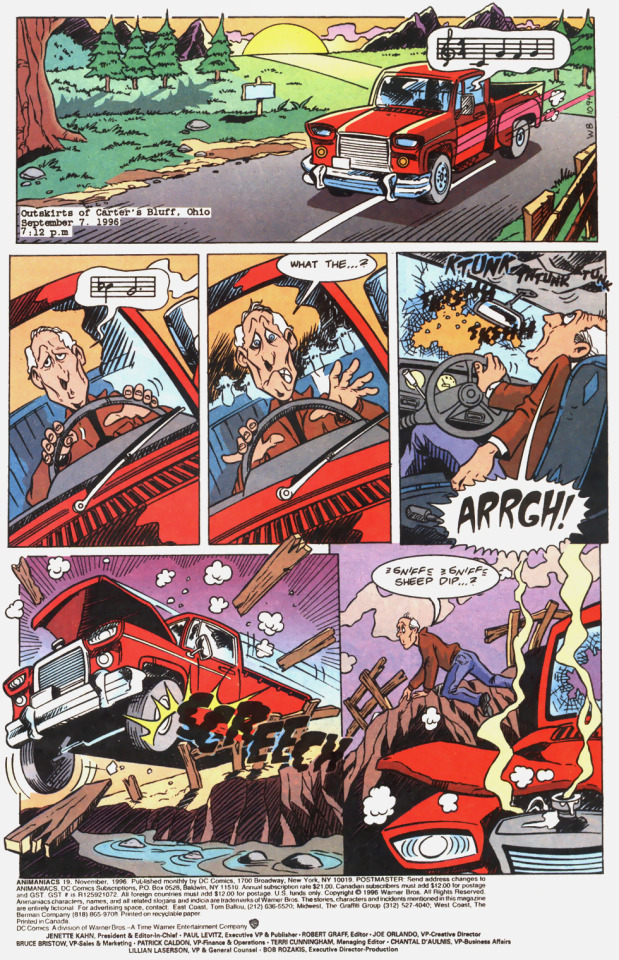




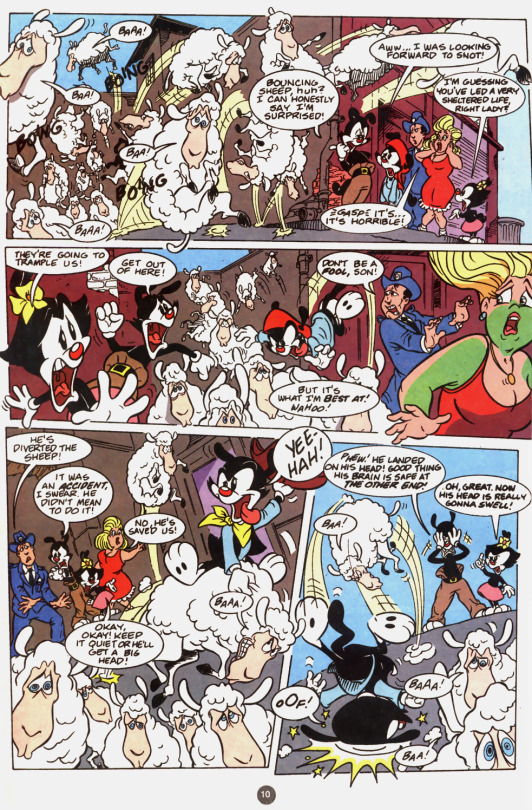
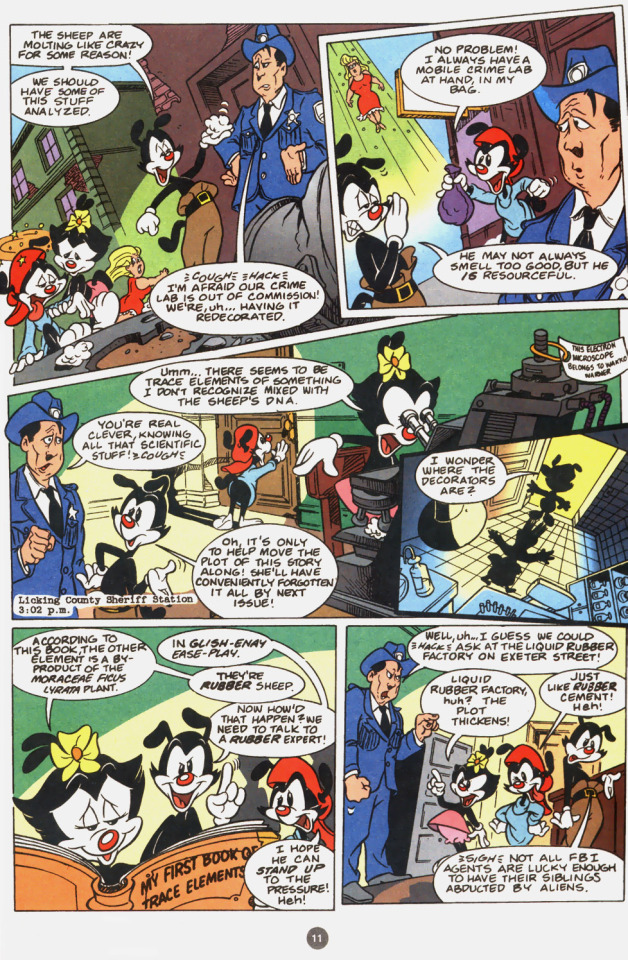


Animaniacs #19 November 1996
"The Y Files" (part 1-2 of 4)
written by Dave King illustrated by Charles Adlard
toon art by Neal Sternecky lettered by John Costanza
colored by Jo Meugniot
"Sheep" (part 1-9 of 10)
written by Dave King
illustrated by Omar Aranda & Scott McRae
lettered by Teresa Davidson
colored by Jo Meugniot
#dc comics#animaniacs#comics#dave king#charlie adlard#neal sternecky#john costanza#jo meugniot#omar aranda#scott mcrae#teresa davidson
12 notes
·
View notes
Text
"BLEAK HOUSE" (1985) Review
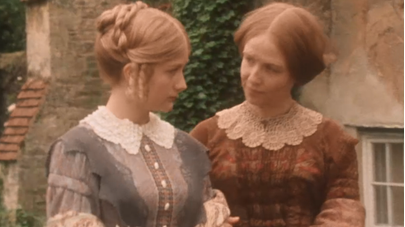
"BLEAK HOUSE" (1985) Review
In less than I year, I have developed this fascination with the works of Charles Dickens. How did this come about? I do not know. I have seen previous Dickens movie and television adaptations in the past. But ever since last year, I have been viewing these adaptations with a vengeance. And one of them turned out to be "BLEAK HOUSE", the 1985 adaptation of Dickens' 1852-53 novel.
Adapted by Arthur Hopcraft, this eight-episode miniseries conveyed the affects of Jarndyce v Jardyce, a long-running legal probate case involving the existence of more than one will. The heirs and their descendants have been waiting decades for the court to determine the legal will, for the sake of a large inheritance. Among those affected by the Jarndyce v Jardyce case are:
*John Jarndyce - a wealthy English landowner, who happens to be the proprietor of the estate, Bleak House. Jarndyce had inherited it from his uncle Tom Jarndyce, who had went mad waiting for a verdict on the case before committing suicide.
*Richard Carstones - Tom Jarndyce's grandson and John Jarndyce's cousin, who also became one of the latter's legal wards, and a potential beneficiary of the Jarndyce v Jardyce case.
*Ada Clare - Tom Jarndyce's granddaughter and Mr. Jarndyce's cousin, who also became one of his legal wards, and a potential beneficiary of the Jarndyce v Jardyce case. She and Richard, also cousins, became romantically involved.
*Esther Summerson - one of the novel's main characters and orphan, who became Mr. Jarndyce's ward following the death of her previous guardian, Miss Barbury, who had also been her biological aunt. She joined the Bleak House household as Ada's companion and Mr. Jarndyce's housekeeper after he became the guardian of Richard and Ada.
*Honoria, Lady Dedlock - the wife of baronet Sir Leicester Dedlock and a beneficiary of the Jarndyce v Jardyce case. She is also the younger sister of Miss Barbury and Esther's illegitimate mother.
*Captain John Hawdon aka Nemo - a former British Army officer, who became an impoverished law writer and drug addict. He is also Lady Dedlock's former lover and Esther's illegitimate father. His penmanship on one of the Jarndyce v Jardyce affidavit attracts Lady Dedlock's attention.
*Mr. Bill Tulkinghorn - Sir Leicester's ruthless lawyer, who noticed Lady Dedlock's reaction to the affidavit. This leads him to investigate her past and possible connection to Hawdon aka "Nemo".
*Miss Flite - An elderly woman living in London, whose family had been destroyed by a long-running Chancery case similar to Jarndyce v Jarndyce. This has led her to develop an obsessive fascination with Chancery cases, especially the main one featured in this story. She quickly befriended Esther, Richard, Ada and Mr. Jarndyce.
As one can see, these characters represented plot arcs that connect to the Jarndyce v Jarndyce case. As one of the beneficiaries of the Jarndyce case, Richard becomes obsessed with the verdict. He seemed more interested in depending upon the Jarndyce verdict to provide him with an income rather than pursue a profession. This obsession eventually led to a clash between and Mr. Jarndyce, who has tried to warn him not to get involved with the case. Another clash formed between Lady Dedlock and Mr. Tulkinghorn, due to his determination to find proof of her past with Nemo and the conception of their child. A clash that proved to create even more damaging for a good number of people, than the one between Mr. Jarndyce and Richard. In the midst of all this stood Esther, who served as an emotional blanket for several characters - especially the inhabitants at Bleak House, a potential romantic figure for three men (ironic for a woman who was not supposed to be a great beauty), and the center of the Lady Dedlock-Nemo scandal.
For years, 1985's "BLEAK HOUSE" had been viewed as the superior adaptation of Dickens' novel. The first novel aired back in 1959. But a third television adaptation that aired in 2005 had managed to overshadow this second adaptation's reputation. But this is not about comparing the three adaptations. I am focusing only the 1985 miniseries. If I might be blunt, I believe screenwriter Arthur Hopcraft and director Ross Devenish created one of the better Charles Dickens I have personally seen. Granted, one might use the source material - the 1952-53 novel - as the reason behind the miniseries' top quality. But I have seen my share of poor adaptations of excellent source material . . . and excellent adaptations of poor or mediocre novels and plays. And I would find this excuse too simply to swallow. Hopcraft and Devenish could have easily created a poor or mediocre adaptation of the novel. Fortunately, I believe they had managed to avoid the latter.
With eight episodes, Hopcraft and Devenish did an excellent job in conveying Dickens' exploration into the chaos of the legal landscape in 19th century Britain, especially cases involving the Chancery courts. One might consider the longevity of Jarndyce v Jarndyce rather exaggerated. However, I speak from personal experience that an extended length of time in such a case is more than possible. But what I thought the effect of Jarndyce v Jarndyce and similar cases in Dickens' story seemed very interesting. In Richard Carstone's case, I suspect his own hubris and upbringing had allowed the case to have such a toxic effect upon him. He had been raised as a gentleman. Which meant he was not expected to work for a living. But since he did not possess a fortune or an estate - like Mr. Jarndyce - Richard never lost hope that the court would rule the Jarndyce v Jarndyce case in his favor, allowing him to inherit a great deal of money. Although it took another case to send Miss Flyte mentally around the bend, I found it interesting that her obsession with Chancery cases led her to attach her interest to the Jarndyce case beneficiaries.
The Jarndyce case also produce a group of leeches in the forms of attorneys like Mr. Tulkinghorn and his obsession with assuming control over the Dedlocks and Mr. Vholes, who had sucked a great deal of money from Richard in exchange for his legal services. The series also featured the vicious moneylender Mr. Smallweed, who helped Mr. Tulkinghorn in the latter's campaign against Lady Dedlock; and Mr. Jarndyce's "friend", Harold Skimpole, who had not only encouraged Richard to pursue a greater interest in the Jarndyce case, but also had accepted a "commission" from Vholes to recruit the young man as a client. Would I regard William Guppy as a leech? Sometimes. I had noticed that one particular story arc was missing - namely the story arc regarding the philanthropist Mrs. Jellyby, her daughter and Esther's friend, Caddy and the Turveydrop family. This did not bother me, for I have never been a fan of that particular arc.
However, I also noticed that "BLEAK HOUSE" featured a few moments in which important plot points had been revealed through dialogue or shown after the fact. Audiences never saw Skimpole convince Richard to hire Mr. Vholes. Instead, Mr. Jarndyce had revealed this incident after it happened. The whole scenario regarding Dr. Allan Woodcock being a survivor of a shipwreck was handled as a past event revealed by the good doctor himself. Hopcraft's script never stretched it out in the same manner as Dickens' novel or the 2005 miniseries. Audiences never saw George Rouncewell's release from jail, for which he had been incarcerated for murder. Instead, Episode Seven began with George in jail and later, near the end, found him serving as Sir Leicester's valet without any information on how that came about.
"BLEAK HOUSE" featured a few other writing and direction decisions by Hopcraft and Devenish that I found . . . well, questionable. Why did the pair solely focused on Lady Dedlock in the series' penultimate episode and Richard and the Jarndyce v Jarndyce case in the final one? Would it have been so difficult for them to switch back and forth between the two arcs in those final episodes? I found Inspector Bucket's resolution to the story's murder mystery rather rushed. I would have liked to see Bucket eliminate suspects before solving the case. In Bucket's final scene with the killer, Hopcraft left out that moment from the novel when the latter had the last scathing word on British society, leaving the police detective speechless. This erasure dimmed the impact of Dickens' message and made the killer even more of a caricature. I had some issues with how Devenish directed certain performances. How can I put this? I found them a bit theatrical.
I have one last issue - namely Kenneth MacMillan's cinematography. I realize that in "BLEAK HOUSE", fog represented institutional oppression and human confusion and misery in society. Unfortunately, I feel that MacMillan may have been heavy-handed in utilizing this symbol in the series. It is bad enough that photography featured a fuzzy element that seemed popular in many period productions in the 1970s. But thanks to MacMillan's use of fog in the story, there were many moment in which I could barely see a damn thing. And I found that irritating.
Aside from a few quibbles, I had no real issues with the performances featured in "BLEAK HOUSE". One of those quibbles proved to be the performances for some of the secondary cast members. How can I say this? The exaggerated and wooden performances for some of the cast members brought back memories of some of the minor actors' bad performances in 1982 miniseries, "THE BLUE AND THE GRAY". I must admit that I did not care for Pamela Merrick's portrayal of Lady Dedlock's French maid, Madame Hortense. Her performance bordered and then surpassed the lines of caricature - as some British actors/actresses tend to do. Charlie Drake's portrayal of the moneylender Smallweed tend to waver between a pretty solid performance and pure caricature. Although there were moments when I found her portrayal of the eccentric Miss Flyte a bit hammy, I must admit that Sylvia Coleridge gave a well-done performance. Chris Pitt's performance as Jo, the crossing sweeper boy struck me as very poignant. Yet, at the same time, he seemed so passive that at times, I found it difficult to believe he had survived on the streets on his own, for so long. Jonathan Moore, whom I had remembered from the 1988 television movie, "JACK THE RIPPER"; did an excellent job of conveying the ambitious and self-interested nature of law clerk William Guppy. However, his portrayal of Guppy seemed to lack the character's comedic nature. Denholm Elliot gave a very interesting performance as Esther, Richard and Ada's guardian, John Jarndyce. On one level, I found his portrayal of the kind-hearted Mr. Jarndyce as first-rate. Excellent. But there were moments, including the character's famous quote following Jo's death, when Elliott's Mr. Jarndyce seemed to resemble one of those "angry young men" characters from a John Osbourne play. I found those moments very odd.
However, there were performances that did not leave me scratching my head. Colin Jeavons and Anne Reid gave very competent performances as the grasping solicitor Mr. Vholes and George Rouncewell's close friend Mrs. Bagnet, respectively. Ironically, Jeavons had portrayed Richard Carstone in the 1959 adaptation of "Bleak House" and Reid had portrayed Mrs. Rouncewell in the 2005 television adaptation. Both Suzanne Burden and Lucy Hornak gave solid performances as Esther Summerson and Ada Clare. And yet, both actresses managed to rise to the occasion with some brilliant moments. Burden's moment came, following Esther's realization that she had survived the smallpox. As for Hornak, she gave an excellent performance during Ada's soliloquy about her love's growing obsession with the Jarndyce case. Brian Deacon gave a passionate performance as Dr. Allan Woodcourt, the penniless doctor in love with Esther. Ian Hogg gave a very solid, yet commanding performance as Inspector Bucket. I really enjoyed Sam Kelly's warm portrayal of the law-stationer, Mr. Snagsby. Bernard Hepton gave one of the most colorful performances of his career as the alcoholic rag and bone shopkeeper, Krook. Dave King gave a very solid performance as the loyal, yet intimidating and conservative former Army sergeant George Rouncewell. I found George Sewell's performance as Sergeant Rouncewell's older brother, the wealthy Mr. Rouncewell not only entertaining, but very memorable. I thought Robin Bailey did an excellent job portrayed the haughty and proud Sir Leicester Dedlock.
But there were four performances that really impressed me. One came from Philip Franks, who did an excellent job of conveying Richard Carstone's emotional journey from John Jarndyce's warm and friendly young man, to the more embittered one, obsessed with the Jarndyce case. T.P. McKenna gave a delicious performance as Mr. Jarndyce's self-involved friend, Harold Skimpole, who proved to be quite the emotional (and financial) vampire. I thought Peter Vaughan was superb as the Dedlocks' sinister lawyer, Mr. Tulkinghorn. I was amazed by how Vaughn managed to combine the character's dedication to protecting his client Sir Leicester and his penchant for assuming control over others. If I had voted for the best performance featured in "BLEAK HOUSE", I would choose Diana Rigg's portrayal of the tragic Honoria, Lady Dedlock. I believe the actress gave a brilliant performance as the mysterious, yet complicated baronet's wife, whose cool demeanor hid a great deal of emotions and a personal secret. I am shocked and amazed that neither she, Vaughn, McKenna or Franks had ever received any accolades for their performances.
In fact, I am surprised that "BLEAK HOUSE" had only received BAFTA nominations (and won three) . . . and they were in the technical/arts category, aside for the Best Drama Series/Serial. No Primetime Emmy nominations, whatsoever. Was this eight-part miniseries the best adaptation of Charles Dickens' 1852-53 novel? I cannot answer that question. Granted, it had its flaws. But what television or movie production did not? But I cannot deny that "BLEAK HOUSE" was a first-rate miniseries that deserved more accolades than it had received, thanks to Arthur Hopcraft's screenplay, Ross Devenish's direction and an excellent cast led by Suzanne Burden, Denholm Elliott and Diana Rigg.
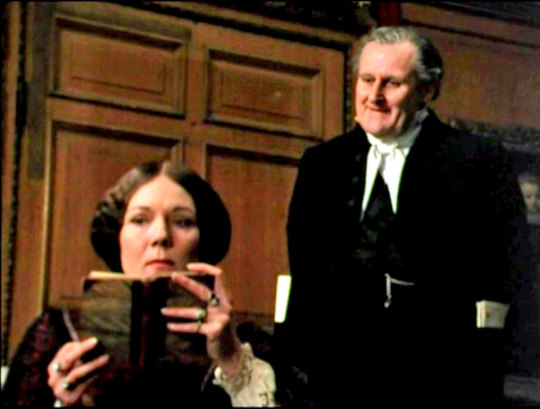
#charles dickens#bleak house#bleak house 1985#arthur hopcraft#ross devenish#suzanne burden#denholm elliott#diana rigg#peter vaughan#philip franks#lucy hornak#colin jeavons#anne reid#dave king#george sewell#robin bailey#brian deacon#chris pitt#sam kelly#ian hogg#jarndyce v. jarndyce#jonathan moore#pamela merrick#sylvia coleridge#charlie drake#bernard hepton#t.p. mckenna#victorian age#period drama#period dramas
4 notes
·
View notes
Text
Tube Surfing: Dave Gibbons, a Breaking into Comics guide, a shameless plug, and some stunning Batman art
A quick scurry around the interweb channels with items on writing comics by Alec Worley, a Dave Gibbons update, and news of a new feature film from Dave King…

View On WordPress
#Alec Worley#Animation News#B7 Comics#B7 Media#Batman#Creating Comics#Dave Gibbons#Dave King#downthetubes News#Hachette#Hachette Partworks#Hibernia Comics#Inktober#John M. Burns#Neil Edwards#Norbertine Bresslern-Roth#Pilgrim - Secrets and Lies#Sofia Girol Aviles#Stephen White#Tube Surfing#Wamberto Nicomedes
5 notes
·
View notes
Text
youtube
Song Review: Julian Lage - “The Layers”
Julian Lage makes his acoustic guitar sing beautifully on “The Layers.”
It’s the instrumental title track and lead single from Lage’s forthcoming (March 17) EP, which he calls “a companion … a prequel to (2022’s) View with a Room.”
The EP will include duos and - like this song - trios, with Lage and the rhythm section of Jorge Roeder and Dave King.
Bill Frisell is on this mini-album, too. And if “The Layers’” dreamy drifting is any indication, the Layers is going to be a soothing journey down a lazy, jazzy river of sound.
Grade card: Julian Lage - “The Layers” - A
2/3/23
4 notes
·
View notes
Text
Flogging Molly – Brooklyn Steel – September 19, 2023

Nearly three decades into their accomplished career and Flogging Molly are still going strong. Last summer they put out their seventh studio album, the Steve Albini–produced Anthem, and last night the tour in support of it brought the Los Angeles Celtic-punk seven-piece to Brooklyn Steel.




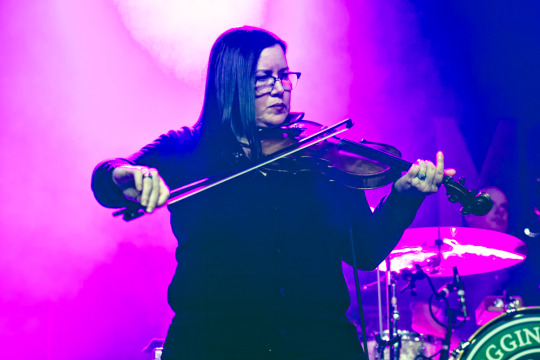










Photos courtesy of Dana Distortion | distortionpix.com
#Bridget Regan#Brooklyn#Brooklyn Steel#Dana Distortion#Dave King#Dennis Casey#Matt Hensley#Mike Alonso#Nathen Maxwell#Photos#Spencer Swain#Steve Albini
0 notes
Audio
"Nessie" by Dutch Williams, Dave King, Aaron Burnett, Stuart Bogie https://ift.tt/zipb4we
0 notes
Text
Julian Lage Live Preview: 12/7, Thalia Hall, Chicago

Photo by Shervin Lainez
BY JORDAN MAINZER
Back in September, Julian Lage quickly followed up his debut Blue Note album Squint with View With A Room. Like Squint, View featured bassist Jorge Roeder and drummer Dave King, but it added a key player to the mix in none other than legendary guitarist Bill Frisell. While it’s admittedly strange to hear Frisell take such a back seat, his subtle style of playing fits within the group, and his and Lage’s chemistry buoy the fact that they both went into the album clear about their influences and what they were trying to accomplish. That is, wanting to combine orchestration with loose, somewhat raw improvisation, Lage relied on Frisell’s common love for some of the most stunningly produced rock albums ever, from The Beach Boys’ opuses to All Things Must Pass. The result is an album that finds things it likes and hones in on them.
Though View is undoubtedly a record affected by all four players, you can’t help but notice first and foremost how well Lage and Frisell work in tandem. On album opener “Tributary”, it’s the way Frisell’s gorgeously languid tones contrast Lage’s prickly playing, immediately adding warmth to the group. On “Auditorium”, Frisell’s rhythms cris-cross with Lage’s spritely leads as King and Roeder mostly sit back. “Chavez” contrasts Frisell’s hazy tremolo with Lage’s spindly arpeggios; it could be a Dick Dale tribute in a parallel universe.
At the same time, Lage knows it’s important to give space for the other players to put their stamp on a song. “Word For Word” is one of three tracks that doesn’t feature Frisell, and presumably since it’s one Lage attempted many times without success, he gave longtime collaborator King the task of propelling the waltz, his pitter-patter drums providing a true sense of motion alongside Lage’s mousy licks. “Echo”, a bass-tinged slow burn, is a Roeder co-writer. And, essentially, it’s Frisell alone that shines on “Temple Steps”, a bluesy, Telecaster strut exemplary of his ability to do a lot with a little.
The band delve into free improv on the penultimate track “Let Every Room Sing”; Lage and Frisell’s guitars steep into the bed of Roeder’s bass and King’s rolling toms and wispy snares. Each player increases in volume and chaos, separately, but in conversation. It feels like the true manifestation of Lage’s end goal with the album, before the taut palate cleanser of “Fairbanks”. Overall, View With A Room is proof of many things--Frisell’s malleability, Roeder and King’s steadiness--but none stronger than Lage’s curatorial voice.
Lage headlines Thalia Hall tonight. Doors at 7:00 PM, show at 8:00. Tickets still available as of publication, including the ability to purchase a Master Class session (one of which we reviewed in March). Margaret Glaspy, who produced View With A Room (and happens to be Lage’s wife), opens.
youtube
#live picks#julian lage#thalia hall#shervin lainez#margaret glaspy#view with a room#squint#jorge roeder#dave king#bill frisell#the beach boys#all things must pass#dick dale#master class
0 notes
Text
The Bad Plus: The Bad Plus (Edition Records; 2022) Por Pachi Tapiz [Grabación de jazz]
The Bad Plus: The Bad Plus (Edition Records; 2022) Por Pachi Tapiz [Grabación de jazz]
En una nueva iteración en su trayectoria vital, The Bad Plus se reinventa. Pasa a ser -en esta ocasión- un cuarteto sin piano, y dando un tirabuzón más publica su segundo disco homónimo, The Bad Plus en Edition Records. Han pasado más de veinte años desde su estreno deslumbrante en 2001 en Fresh Sound New Talent. Esta grabación que les hizo fichar por Columbia. De ese modo, en el año 2003 se…
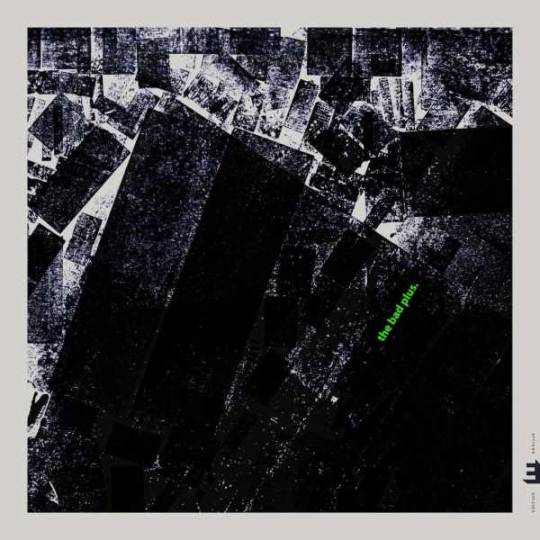
View On WordPress
1 note
·
View note
Text


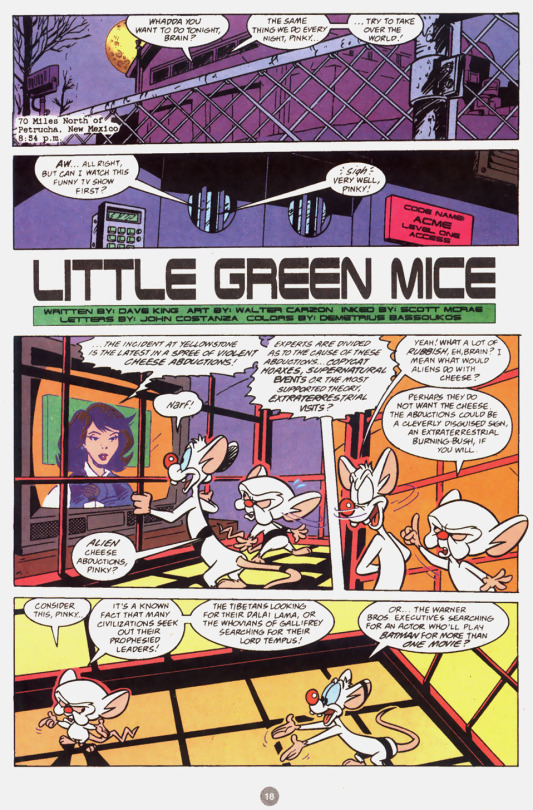
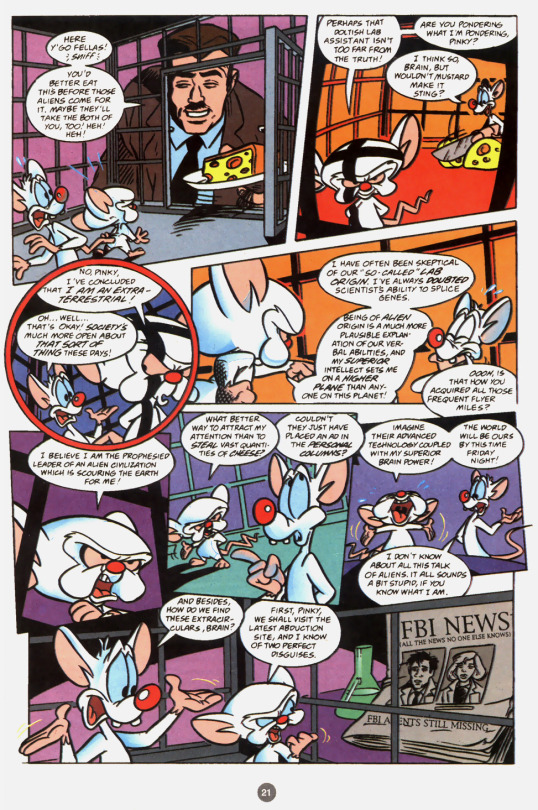

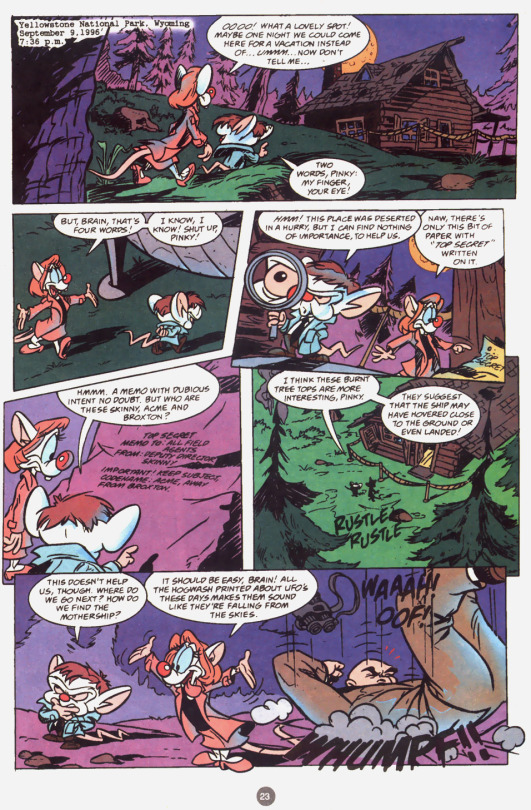


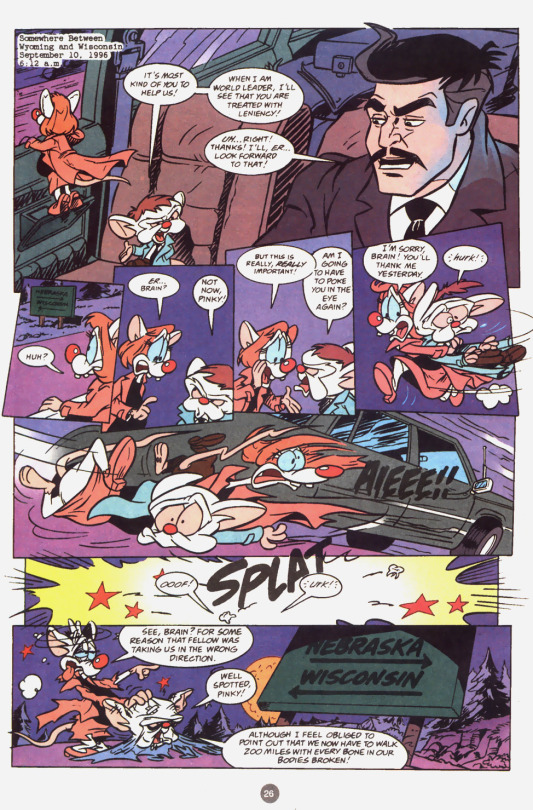
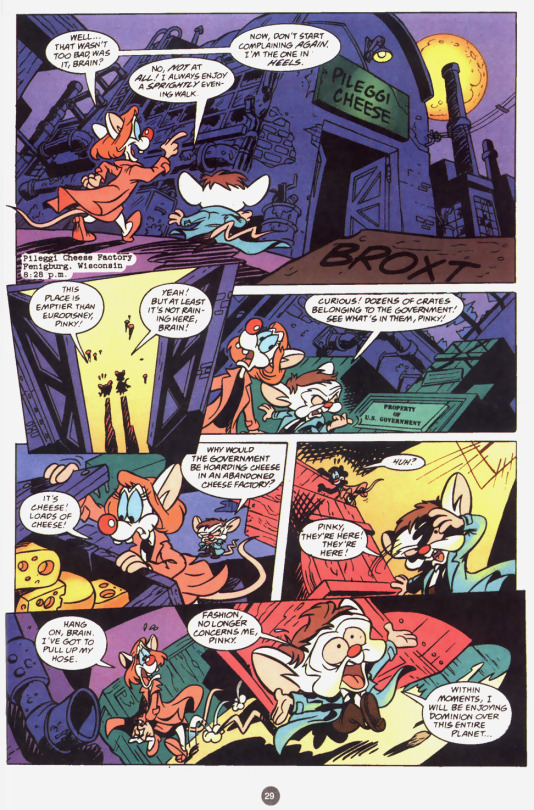
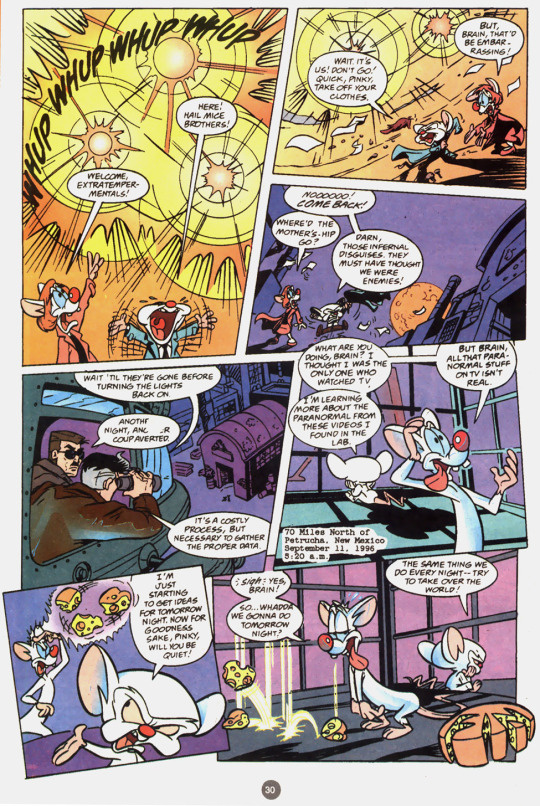


Animaniacs #19 November 1996
"Sheep" (part 10 of 10)
written by Dave King
illustrated by Omar Aranda & Scott McRae
lettered by Teresa Davidson
colored by Jo Meugniot
"Little Green Mice"
written by Dave King art by Walter Carzon
inked by Scott McRae letters by John Costanza
colors by Demetrius Bassolkos
"The Y Files" (part 3-4 of 4)
written by Dave King illustrated by Charles Adlard
toon art by Neal Sternecky lettered by John Costanza
colored by Jo Meugniot
#dc comics#animaniacs#comics#dave king#omar aranda#scott mcrae#teresa davidson#jo meugniot#walter carzon#john costanza#demetrius bassolkos#charlie adlard#neal sternecky
9 notes
·
View notes
Text
JAZZOWE REKOMENDACJE: Julian Lage „View With A Room”
JAZZOWE REKOMENDACJE: Julian Lage „View With A Room”
Blue Note Records, 2022
Prawdziwą bombę odpalił Julian Lage przy okazji wydania swojego drugiego albumu dla Blue Note. Skład autorskiego tria, które grało na poprzednim albumie, rozszerzył o drugą gitarę, zapraszając do studia nagrań swojego idola Billa Frisella.
Całość materiału podpisał Julian Lage, z wyjątkiem „Echo” które jest wynikiem kompozytorskiej współpracy lidera z basistą Jorge…

View On WordPress
0 notes
Text
If i had a nickel for every time an actor from Hamilton voiced a character in Trolls, i'd have two nickels. Which isn't a lot, but it's weird that it happened twice.
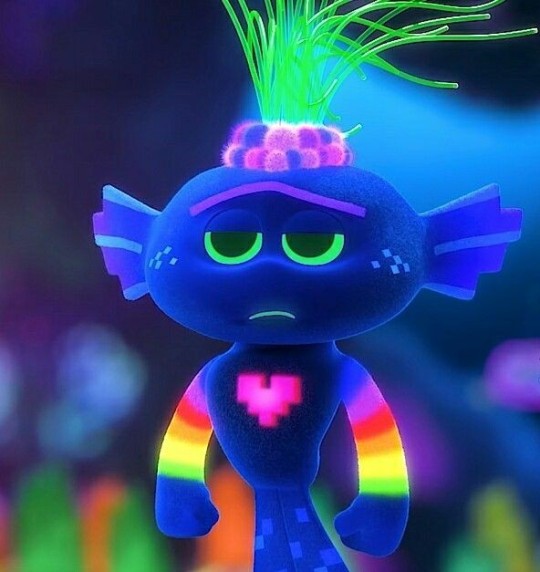



#trolls#dreamworks trolls#hamilton#trolls 2#trolls world tour#king trollex#trolls 3#trolls band together#bruce trolls#bruce trolls 3#anthony ramos#daveed diggs#john laurens#philip hamilton#marquis de lafayette#thomas jefferson
733 notes
·
View notes
Text
Paying tribute to John Romita Sr: How he Changed the life of writer, animator and comic creator Dave King
Animator, comic artist and writer Dave King reflects on the influence of John Romita Sr. and the impact on his career

View On WordPress
1 note
·
View note

